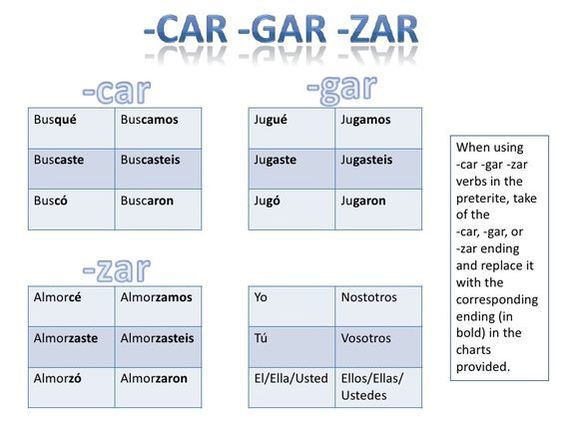

Although you can use either Ser or Estar to mean “to be”, we use Ser to talk about more permanent traits. The first verb we want to talk about is Ser.
#Estar preterite endings how to
So let’s get straight to it and figure out how to conjugate the verbs Ser and Estar. The good news is that these two verbs are so common that you’ll have them memorized in no time! We’ll see that while the two verbs might be a bit complicated at first, they’re nothing you can’t handle! Both of these two verbs end up causing students a lot of problems when they’re learning Spanish because of their tricky conjugation tables.īut today – we’re going to be putting the Ser vs Estar problems to rest. And this is absolutely true with Ser and Estar. Juan podía participar en la manifestación.As it usually turns out – some of the most common Spanish verbs end up being highly irregular.

This is not surprising, since the difference in meaning can be traced back to the different way in which these two past tenses are used.Įn aquella época conocíamos muy bien la ciudad. Some verbs actually change meaning, depending upon whether they are used in the preterite or the imperfect. Here are the verbs, along with their corresponding stem changes: Infinitive The pattern is that while their stems change, they all take the following endings: There are a number of verbs that are irregular in the preterite that follow a particular pattern. Verbs that end in -ucir are irregular and conjugated as follows: Here are three more verbs that are irregular in the preterite: decir Verbs that end in -aer, -eer, -oír, -oer, and uir change ió to yó and ieron to yeron.There are a number of orthographic changing verbs in the preterite: They change e:i and o:u in the third person, singular and plural. ir verbs that change their stem in the present tense do change in the preterite, but in a different way. They are conjugated just like other regular preterite verbs. ar and -er verbs that change their stem in the present tense do not change in the preterite. Other words and phrases indicate repetitive, vague or non-specific time frames, and therefore signal the use of the imperfect.Ī menudo (often) a veces (sometimes) cada día (every day) cada semana (every week) cada mes (every month) cada año (every year) con frecuencia (frequently) de vez en cuando (from time to time) en aquella época (at that time) frecuentemente (frequently) generalmente (usually) muchas veces (many times) mucho (a lot) nunca (never) por un rato (for awhile) siempre (always) tantas veces (so many times) todas las semanas (every week) todos los días (every day) todo el tiempo (all the time) varias veces (several times) Some words and phrases indicate specific time frames, and therefore signal the use of the preterite.Īyer (yesterday) anteayer (the day before yesterday) anoche (last night) desde el primer momento (from the first moment) durante dos siglos (for two centuries) el otro día (the other day) en ese momento (at that moment) entonces (then) esta mañana (this morning) esta tarde (this afternoon) la semana pasada (last week) el mes pasado (last month) el año pasado (last year) hace dos días, años (two days, years ago) ayer por la mañana (yesterday morning) ayer por la tarde (yesterday afternoon) There are only three irregular verbs in the imperfect: ser Note: This is not a typo ser and ir do have identical conjugations in the preterite! Ser, ir, dar and hacer are irregular in the preterite: ser To describe the characteristics of people, things or conditions.For actions that “set the stage” for another past action.For actions that were repeated habitually.The imperfect is used in the following situations: To state the beginning or the end of an action.For actions that were part of a chain of events.For actions that occurred during a specific period of time.

For actions that were repeated a specific number of times.For actions that can be viewed as single events.The preterite is used in the following situations: Generally speaking, the preterite is used for actions in the past that are seen as completed, while the imperfect tense is used for past actions that did not have a definite beginning or a definite end.Īnother way to view this is that the preterite tells us specifically when an action took place, while the imperfect tells us in general when an action took place. Here are all three regular imperfect verb forms together: hablar Note: The nosotros forms for -ar and -ir verbs are the same in both preterite and present tenses: hablamos, vivimos. Here are all three regular preterite verb forms together: hablar Subjunctive VIII: Actions not yet completed Subjunctive III: Verbs that change orthographically Subjunctive II: Conjugating regular and stem-changing verbs


 0 kommentar(er)
0 kommentar(er)
